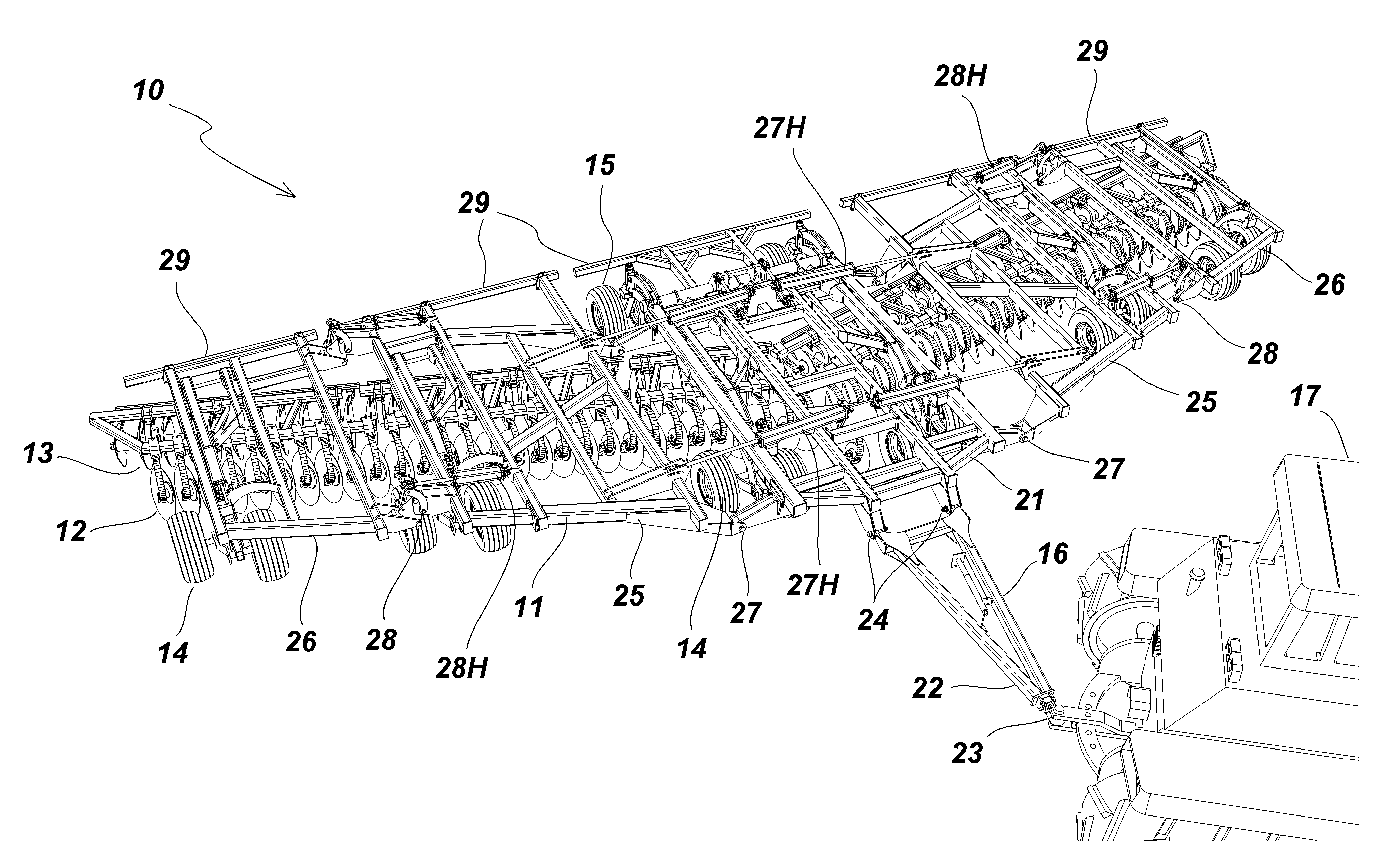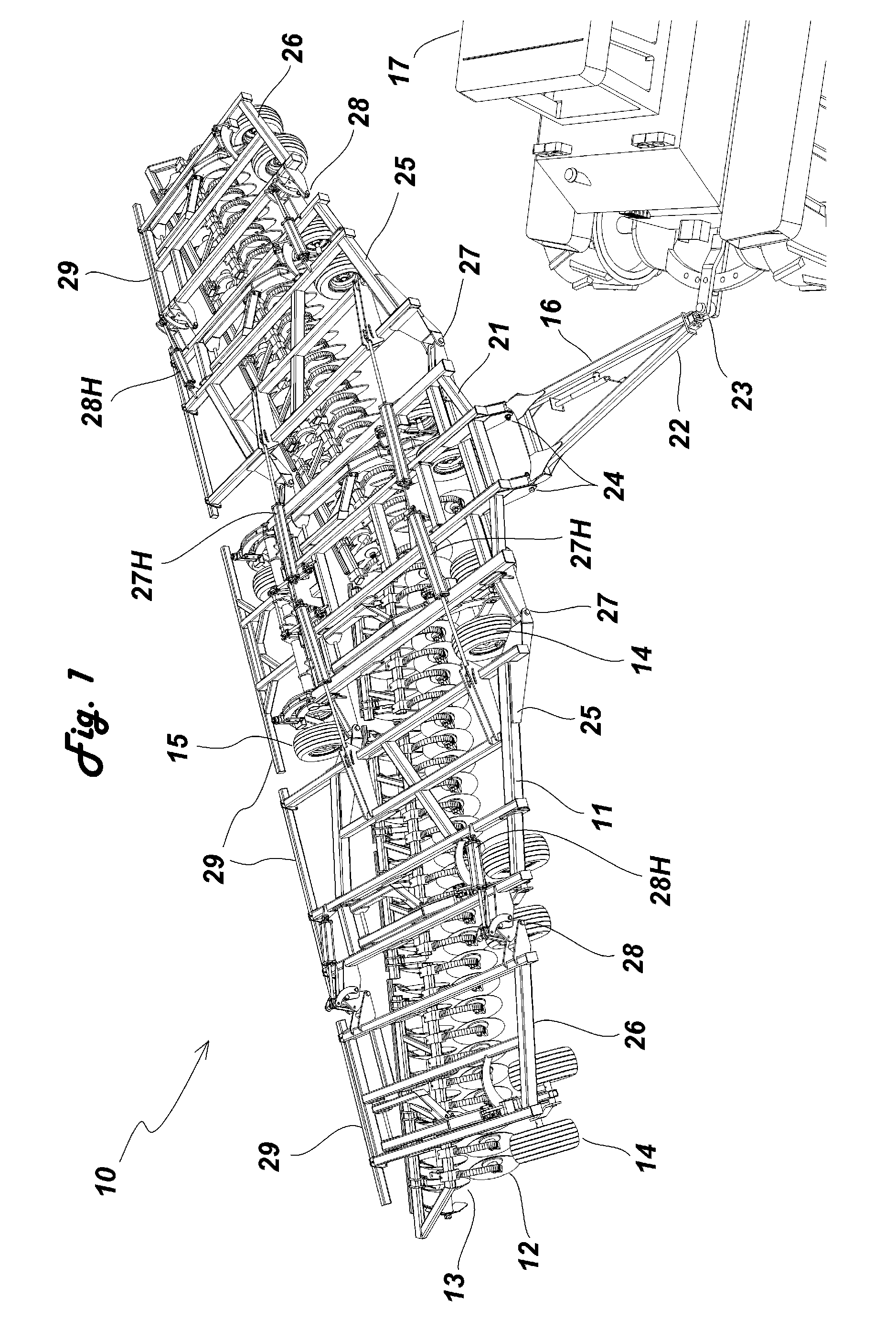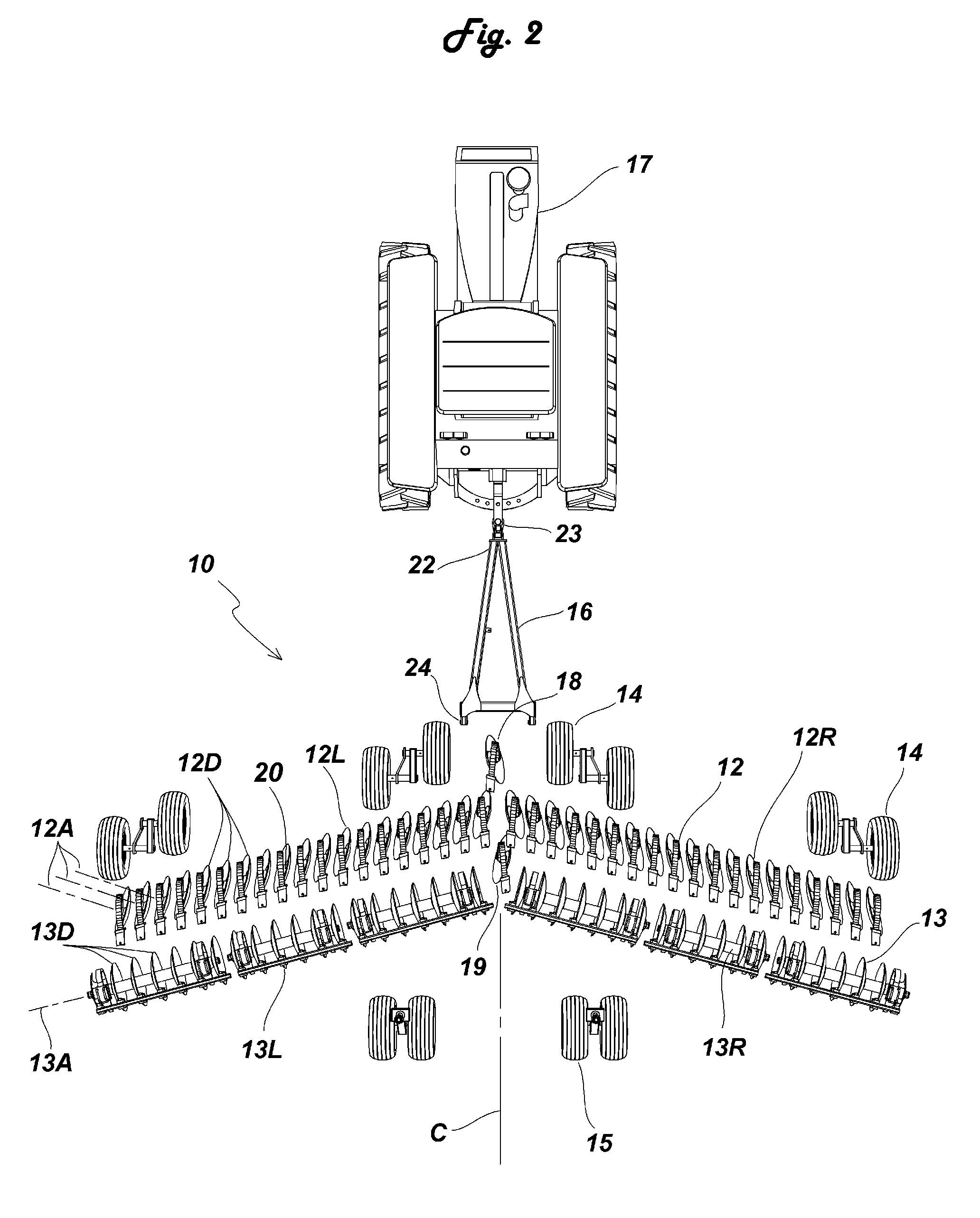Blade arrangement for disk harrows
a disk harrow and blade arrangement technology, applied in the field of tillage equipment, can solve the problems of increasing the overall weight of the implement, limiting the design of larger-size disk harrows, and creating maintenance challenges, so as to prevent or minimize the divergence of disk gangs. the effect of a larger width and disk harrows
- Summary
- Abstract
- Description
- Claims
- Application Information
AI Technical Summary
Benefits of technology
Problems solved by technology
Method used
Image
Examples
Embodiment Construction
[0037]A tandem disk harrow according to embodiments of the present invention will now be described in detail with reference to FIGS. 1 to 16 of the accompanying drawings.
[0038]A five-section tandem disk harrow 10 according to the present invention is shown in FIG. 1. The disk harrow 10 has a frame 11, a front disk gang 12, a rear disk gang 13, a plurality of depth gauging wheels 14, 15, and a substantially free floating hitch assembly 16. The disk harrow 10 can be attached to a tractor 17 and used to provide either primary or secondary tillage of an agricultural field.
[0039]A portion of the disk harrow 10 is shown in plan view in FIG. 2. The frame 11 and outer wing sections of the disk harrow 10 have been omitted from FIG. 2 to provide a clearer illustration of the arrangement of the disk gangs 12, 13 and the depth gauging wheels 14, 15.
[0040]In FIG. 2, the front and rear disk gangs 12, 13 on each side of the longitudinal centerline C of the disk harrow 10 are substantially parallel...
PUM
 Login to View More
Login to View More Abstract
Description
Claims
Application Information
 Login to View More
Login to View More - R&D
- Intellectual Property
- Life Sciences
- Materials
- Tech Scout
- Unparalleled Data Quality
- Higher Quality Content
- 60% Fewer Hallucinations
Browse by: Latest US Patents, China's latest patents, Technical Efficacy Thesaurus, Application Domain, Technology Topic, Popular Technical Reports.
© 2025 PatSnap. All rights reserved.Legal|Privacy policy|Modern Slavery Act Transparency Statement|Sitemap|About US| Contact US: help@patsnap.com



